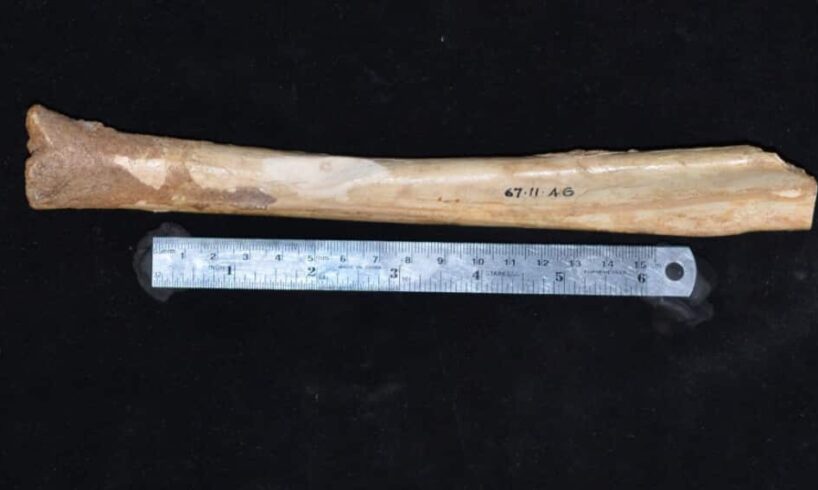
A decades-old theory that First Nations peoples hunted Australia’s megafauna to extinction might not stack up, according to new research.Australia was once inhabited by giant kangaroos, sheep-sized echidna, and enormous creatures that resembled two-metre-tall, three-metre-long wombats. Roughly 40,000 years ago, they disappeared. New research published on Wednesday in the Royal Society Open Science journal debunks one of these pieces of evidence: The fossilised tibia of a now-extinct giant kangaroo found in Western Australia around the time of the World War One.Late-20th-century studies on the bone and other charred deposits found in Mammoth Cave in Leeuwin-Naturaliste National Park determined that a cut on the bone was evidence of human “butchery” — proof that Indigenous people had hunted megafauna.
But researchers have analysed the tibia with new technology and determined that the cut on its surface, while still likely human-made, had happened “long after death”, possibly even after it was already fossilised.The research team argued that rather than hunting and killing megafauna, Indigenous peoples were fossil collectors, transporting bones and teeth from deceased animals across Australia.
“We argue that fossils were valued, being collected and transported long distances by the First Peoples in Australia in all probability thousands of years before Europeans arrived on this continent,” the researchers wrote.
Credit: Karora/Public Domain
Professor Mike Archer, a palaeontologist and fossil expert at the University of New South Wales who was also an author on a previous study of the bone, conceded the limitations of technology at that time.”Back in 1980, we interpreted the cut as evidence of butchery because that was the best conclusion we could draw with the tools available at the time. Thanks to advances in technology, we can now see that our original interpretation was wrong,” he said.
“If humans really were responsible for unsustainably hunting Australia’s megafauna, we’d expect to find a lot more evidence of hunting or butchering in the fossil record. Instead, all we ever had as hard evidence was this one bone — and now we have strong evidence that the cut wasn’t made while the animal was alive.”
Archer was the lead researcher on the new study, and said he thought the “previously-held assumption” that First Nations people were “killing and slaughtering Australia’s megafauna to extinction” had been so easily adopted because it reflected the behaviour of European settlers.”When Europeans arrived to new continents, they removed the local biodiversity and brought in the alien animals they valued. Those are the things that European people have always done and it’s been a disaster,” he told SBS News.”The truth is, the 17 animals that have gone extinct since 1788 were doing just fine before the Europeans arrived.”The group of researchers from across Australia’s institutions used modern 3D-scanning technology to look inside the bone and found it was highly improbable that the cut was made when it was “fresh”.The team concluded there was no hard evidence to support the claim that “First Peoples killed or butchered any individual of any of the now extinct megafaunal species in Australia”. “This is not to say that it did not happen, just that there is now no hard evidence to support that it did,” they wrote.Archer said while he “didn’t doubt” that some animals were eaten by Indigenous peoples, there was “absolutely no evidence” to support the idea that they did so irresponsibly. “First Nations people have been blamed for irresponsibly killing these megafauna, without a shred of hard evidence to back it up,” Archer said.”There’s no merit, no benefit in over-killing food resources. So if the Indigenous people didn’t kill the megafauna, who did? Climate change is more plausible.”
Source





